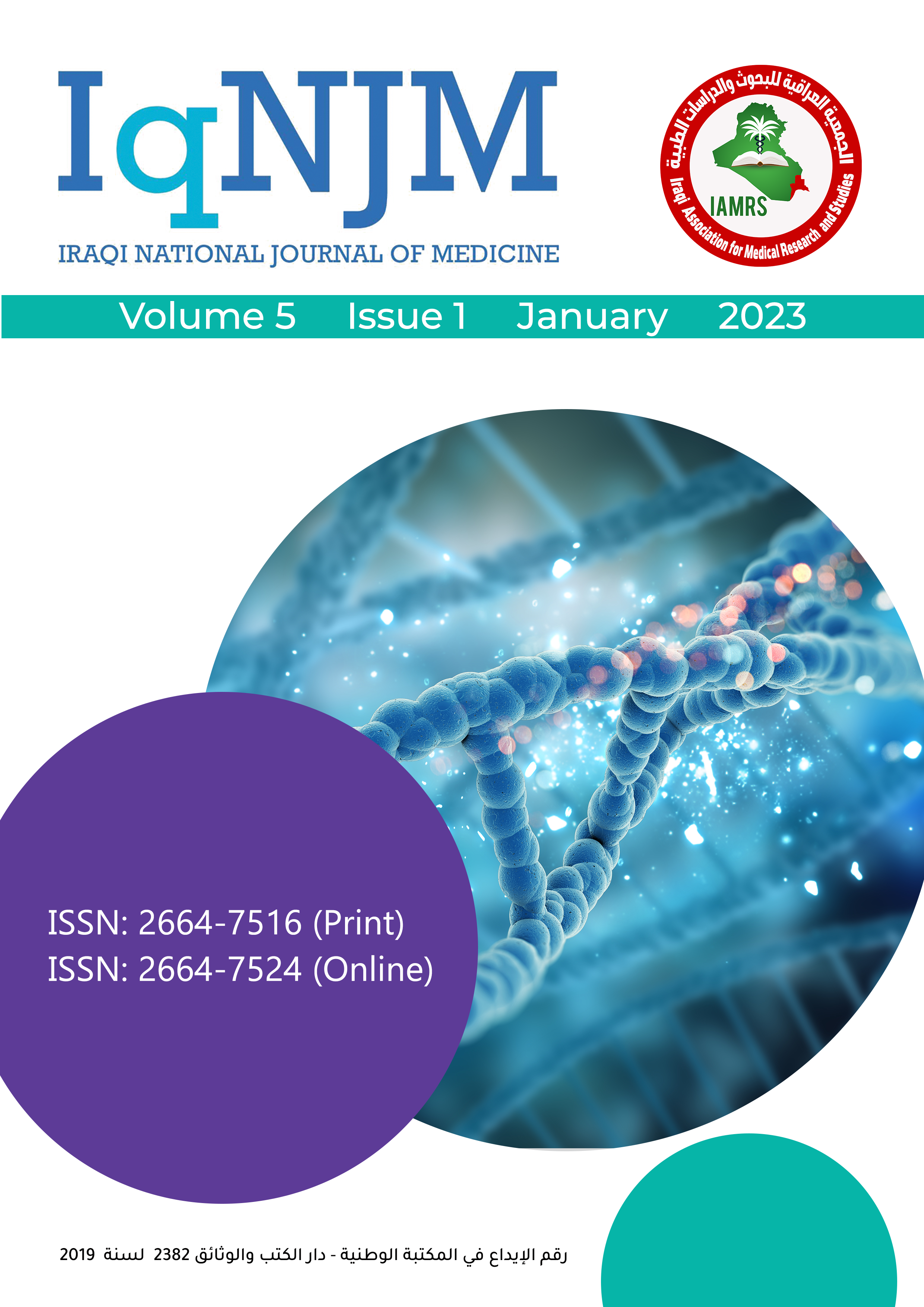Incidence of Registered Tuberculosis in Nineveh Governorate, a Case Study Incidence of Registered Tuberculosis in Nineveh Governorate, a Case Study
Main Article Content
Keywords
Tuberculosis , incidence, pulmonary, Nineveh, Extra-pulmonary
Abstract
Background After data has been sorted, statistical analysis is used to compare it. Statistical analysis was used to compare tuberculosis data from two different and distinct years in order to determine the extent of the development of this disease.
Aim This study aimed to estimate the annual incidence of registered tuberculosis cases in the Nineveh Governorate before and after the (COVID-19) pandemic outbreak. These injuries were compared with data on this disease recorded in Iraq, neighboring countries, and the world. To investigate the personal characteristics and fate of diagnosed patients was yet another aim.
Methods Data on diagnosed tuberculosis patients 654, and 249 registered in the Specialized Chest Disease Center in Nineveh for 1993, and 2021 respectively. Data for the year 1993 were recorded in a complete form for statistical analysis, while data for the year 2021 were recorded on the computer.
Results Despite the governorate's population growth, the infection rate decreased from 37 cases per 100,000 people in 1993 to 4 cases per 100,000 people in 2021. In contrast, the incidence of extrapulmonary tuberculosis increased from 25% to 33% between 1993 and 2021, based on the number of recorded cases. In 1993, the age group (25-45) was the most affected, and the rate of infection in urban areas was 81% in 2021, with the rest of the rates being close.
Conclusion The study concluded that the results are consistent with Iraqi and global statistics, as there has been a significant and gradual decrease in injuries recently compared to previous years. This was attributed to vaccinations and raising health awareness among all age groups, as well as rural and urban residents, as well as the spread of COVID-19.
References
2. Narain JP, Raviglione MC, and Kochi A. HIV-associated tuberculosis in developing countries: epidemiology and strategies for prevention. Tuberculosis and Lung Disease. 1992;73:311–321.
3. Zenner D. Time to regain lost ground: Tuberculosis in the COVID-19 era. Euro Surveill. 2021;26(24):pii=2100564. https://doi.org/10.2807/1560-7917. ES.2021.26.24.2100564
4. Vos T, Lim SS, Abbafati C, Abbas KM, Abbasi M, Abbasifard M, et al. Global burden of 369 diseases and injuries in 204 countries and territories, 1990-2019: a systematic analysis for the Global Burden of Disease Study 2019. Lancet. 2020;396(10258):1204-22. https://doi.org/10.1016/S0140-6736(20)30925-9 PMID: 33069326
5. WHO. Global tuberculosis report 2020. Geneva: World Health Organization; License: CC BY-NC-SA 3.0 IGO, 2020:232 P.
6. Hogan, et al, 2020. Potential impact of the COVID-19 pandemic on HIV, tuberculosis, and malaria in low-income and middle-income countries: a modelling study. Lancet Glob Health 2020; 8: e1132-41.
7. WHO. Tuberculosis control in the Eastern Mediterranean Region, World Health Organization, Regional Office for the Eastern Mediterranean. 2009; WHO-EM/TUB/256/E: 94 P.
8. WHO. Global Tuberculosis Report, World Health Organization, 20 Avenue Appia, 1211 Geneva 27, Switzerland. 2013; (www.who.int/about/licensing/copyright_form/en/index.html): 306 P.
9. Mahmood KA. Histological and Epidemiological study on Mycobacterium tuberculosis in Nineveh Governorate, Tikrit Journal of Pure Science. 2019;24(1):13-22, DOI: http://dx.doi.org/10.25130/tjps.24.2019.003.
10. Amelia AR, Abbas HH, Taslim RA, Haeruddin and Jayanti TA. Social, Economic, and Cultural Interactions among Tuberculosis Patients in the Slums of Makassar City, Indonesia. Ann Trop Med & Public Health. 2020;23(S13A): SP231324. DOI: http://doi.org/10.36295/ASRO.2020.231324.
11. Lin H, Wang L, Zhang H, Ruan Y, Chin DP and Dye C. Tuberculosis control in China: use of modelling to develop targets and policies, Bull World Health Organ. 2015;93:790-798. DOI: http://dx.doi.org/10.2471/BLT.15.154492.
12. MOP. Ministry of Planning, Central Statistical Organization, Nineveh Statistics Directorate, Estimates of the population distribution of Nineveh Governorate by administrative units, environment and gender for the year 2021.
13. WHO. Global Tuberculosis Control Surveillance, Planning, Financing, Geneva, World Health Organization. 2007; (WHO/HTM/TB/2007.376): 277 P.
14. Lapausa MR, Saldana AM, and Asensio AN. Extrapulmonary tuberculosis: an overview, Rev Esp Sanid Penit. 2015;17:3-11.
15. Pang Y, An J, Shu W, Huo F, Chu N, Gao M, Qin S, Huang H, Chen X, and Xu S. Epidemiology of Extrapulmonary Tuberculosis among Inpatients, China, 2008–2017, Emerging Infectious Diseases, www.cdc.gov/eid, 2019;25(3):457-464, DOI: https://doi.org/10.3201/eid2503.180572.
16. United Nations, Department of Economic and Social Affairs, Population Division. World Population Prospects: The 2019 Revision, https://www.populationpyramid.net/iraq/2019/.
17. OWD, Our World Dat. 2022; https://ourworldindata.org/.


